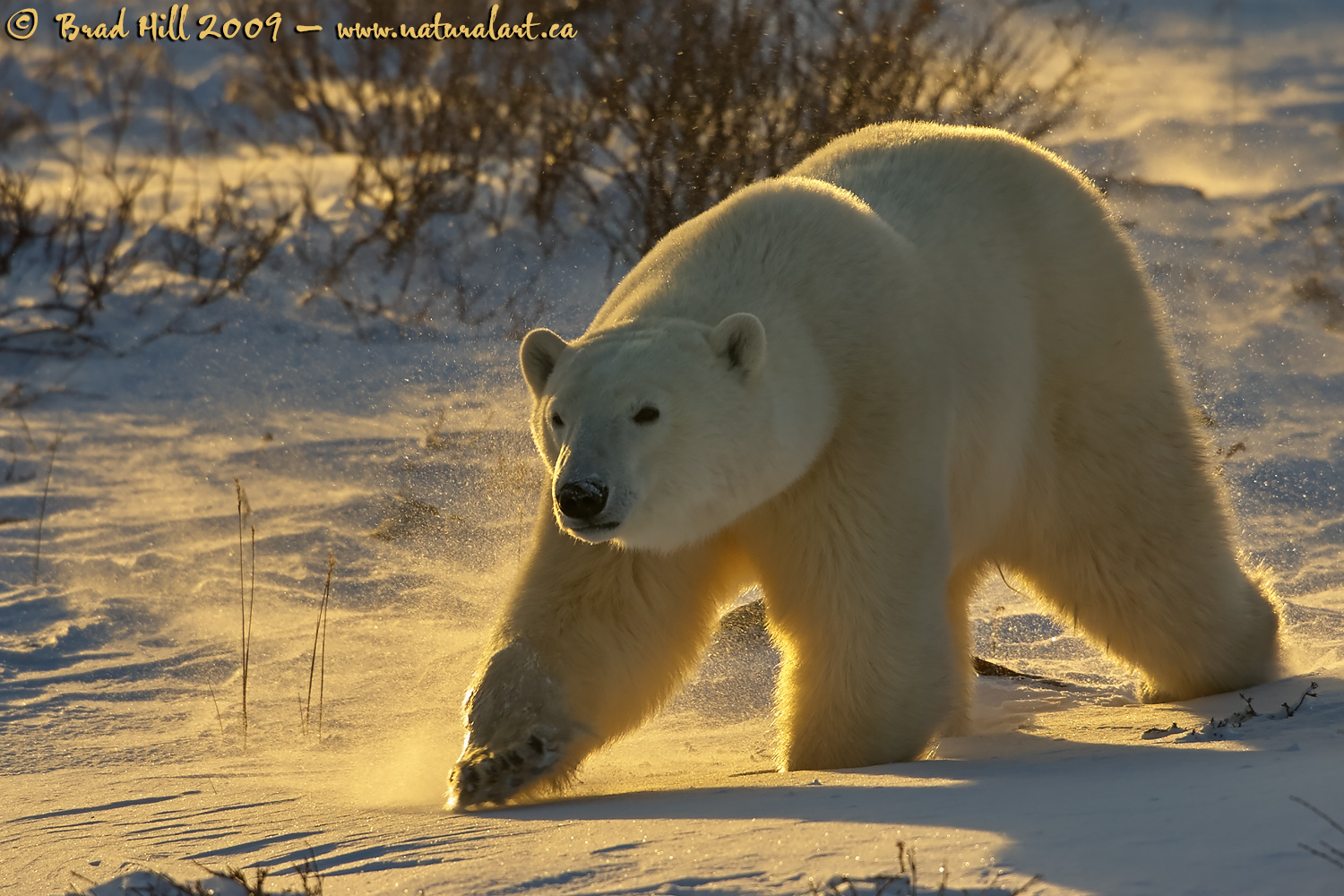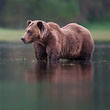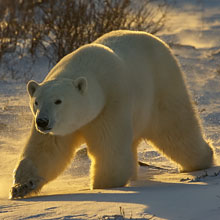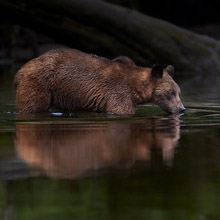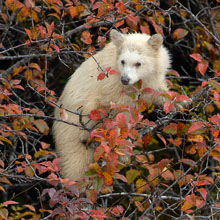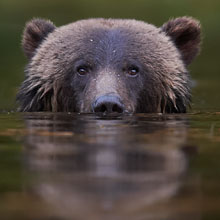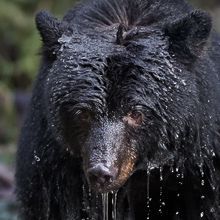Availability: Limited Edition Print
In the Field
Sunrise Stalk. Cape Churchill, MB, Canada. October 26, 2004.
Normally, being the subject of a stalking Polar Bear would leave me a little unsettled. In this case, however, we were safely encased within a bear-proof tundra buggy! Nonetheless, it was a thrilling moment as the bear circled almost completely around us and approached with the blinding sun directly behind it. From a photographic perspective, it was a challenging situation. Normally when photographing white bears on white snow you over-expose the image by 2/3 to a full stop (from the suggested reading of your light meter) in order to ensure that the whites turn out truly white (and not gray). But, in this case I was shooting digitally and knew that any over-exposure at all would result in totally blown-out highlights that lacked any detail. So I chose to trust my camera's light meter and shoot dead-on the suggested exposure. As expected, some shadow detail initially appeared to be lost, but I was easily able to retrieve it when converting my RAW file.
ADDITIONAL NOTES:
1. This image - in all resolutions - is protected by copyright. I'm fine with personal uses of them (including use as desktop backgrounds or screensavers on your own computer), but unauthorized commercial use of the image is prohibited by law. Thanks in advance for respecting my copyright!
2. Like all wildlife photographs on this website, this image was captured following the strict ethical guidelines described in The Wildlife FIRST! Principles of Photographer Conduct. I encourage all wildlife photographers to always put the welfare of their subjects above the value of their photographs.
Behind the Camera
Sunrise Stalk. Cape Churchill, MB, Canada. October 26, 2004.
Digital Capture; Compressed RAW (NEF) format; ISO 200.
Nikon D2H with Nikon 200-400 mm f/4G ED-IF AF-S VR lens @ 400 mm (600 mm equivalent with digital conversion factor) supported on bean bag.
1/500s @ f6.3; no compensation from matrix-metered exposure setting.
At the Computer
Sunrise Stalk. Cape Churchill, MB, Canada. October 26, 2004.
RAW Conversion to 16-bit TIFF, including first-pass sharpening, using Phase One's C1 Pro. Multiple RAW conversions (4 at different exposure settings) to extend dynamic range of captured image, in this case primarily to restore shadow detail on front and side of the bear.
All further digital correction on 16-bit TIFF file using Adobe's Photoshop CS, including compositing and masking of various exposure versions, selective saturation enhancement, selective application of cooling filter, and selective sharpening for web output.
Conservation
Sunrise Stalk. Cape Churchill, MB, Canada. October 26, 2004.
Ten percent of the revenue generated by this image will be donated to the Yellowstone to Yukon Conservation Initiative.
Species Status in Canada*: Special Concern (November 2002).
Polar Bears (Ursus maritimus) are the largest terrestrial carnivores on the planet and the most carnivorous of all bears. They are highly specialized and feed almost exclusively on Ringed Seals. Polar Bears hunt their prey from ice sheets and are dependent upon these ice sheets for their survival.
Like any highly-specialized organism, Polar Bears are highly susceptible to habitat alteration. Climate change - natural or human-induced - is probably the greatest long-term threat to Polar Bear survival. The longer ice-free seasons experienced in the southern reaches of their distribution is already making it difficult for them to hunt.
The Yellowstone to Yukon (Y2Y) Conservation Initiative seeks to ensure that the world-renowned wilderness, wildlife, native plants, and natural processes of the Yellowstone to Yukon region continue to function as an interconnected web of life, capable of supporting all of its natural and human communities, for current and future generations.
For more information on the status of Polar Bears in Canada, go to: http://www.speciesatrisk.gc.ca and search under "Polar Bears".
*as determined by COSEWIC: The Committee on the Status of Endangered Wildlife in Canada












